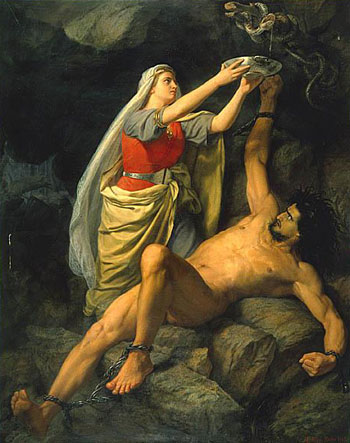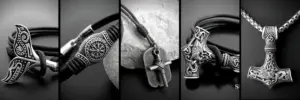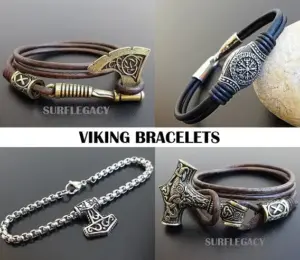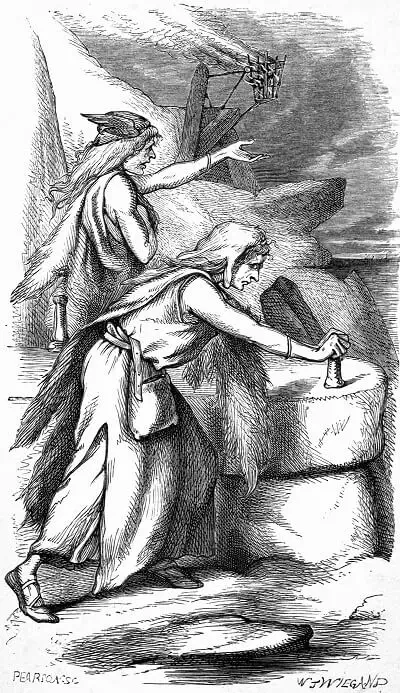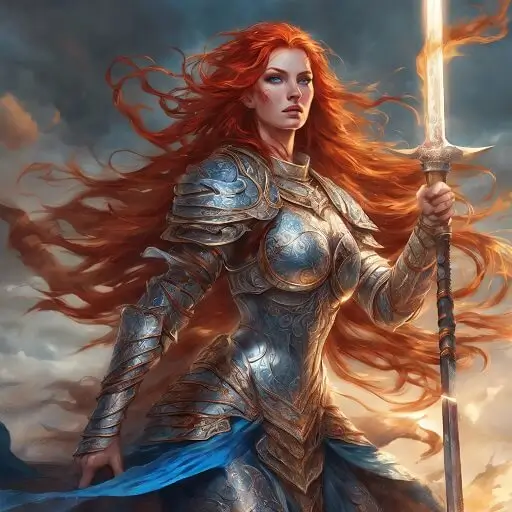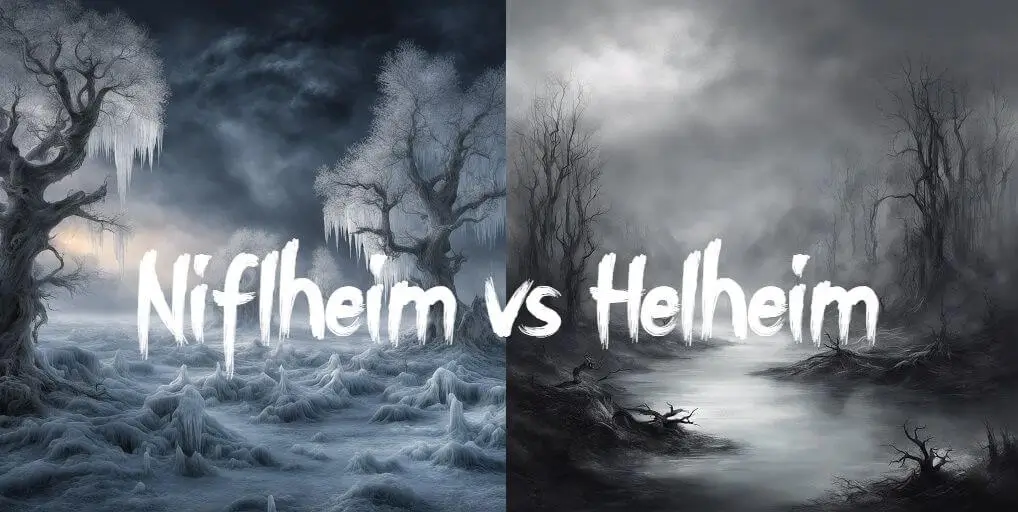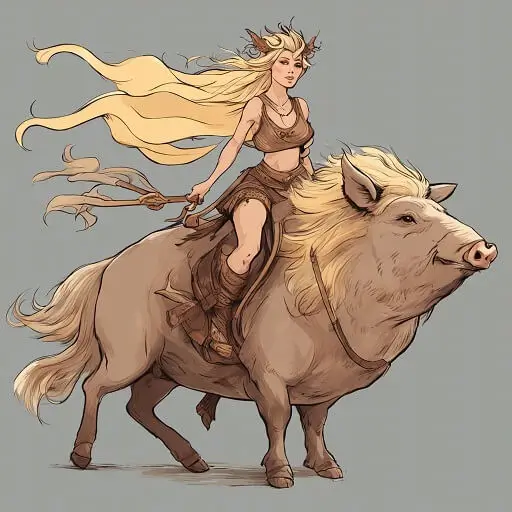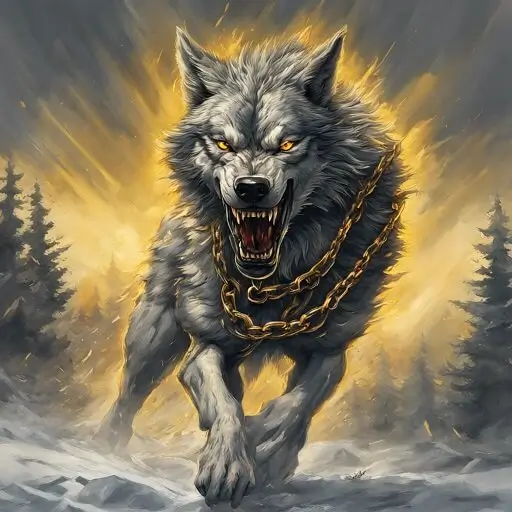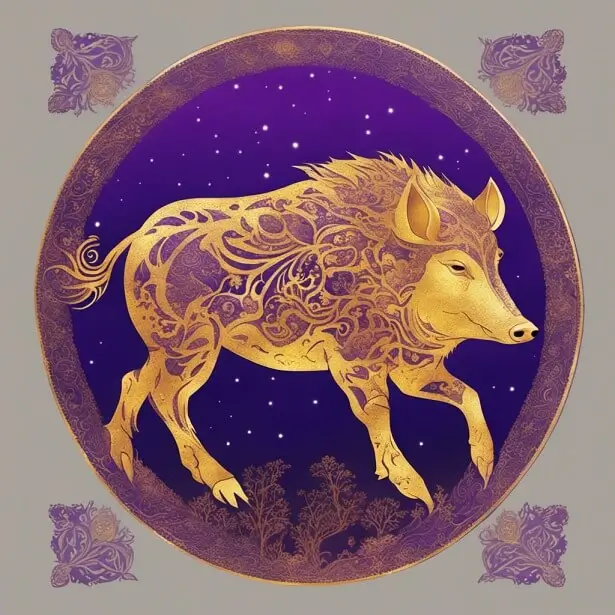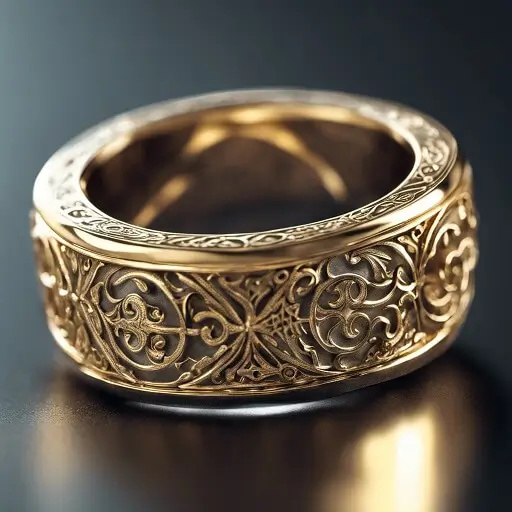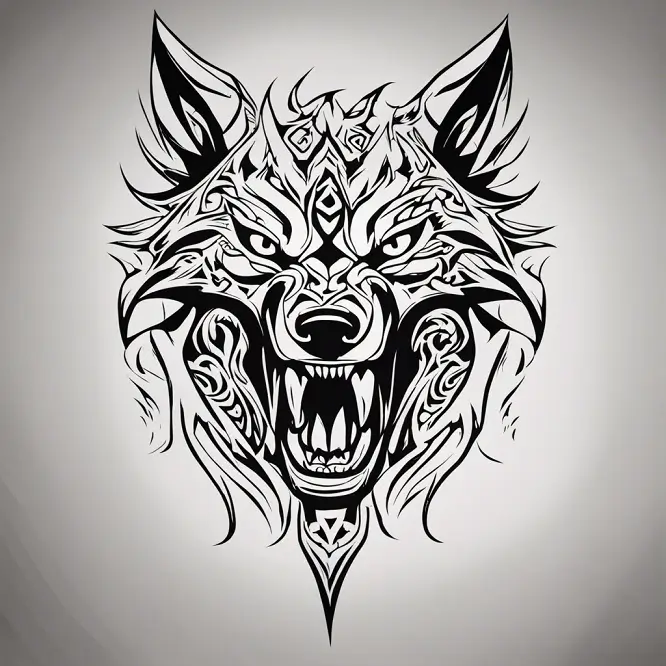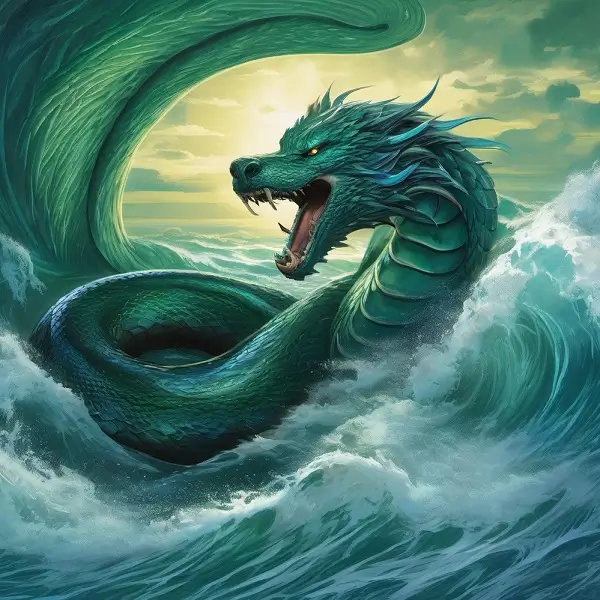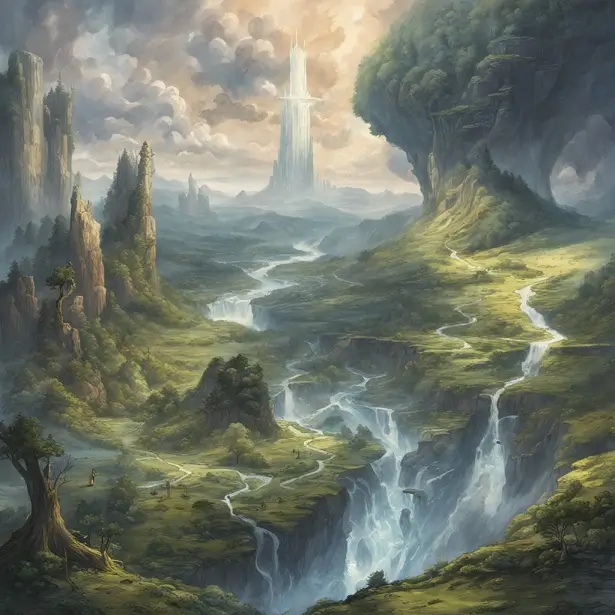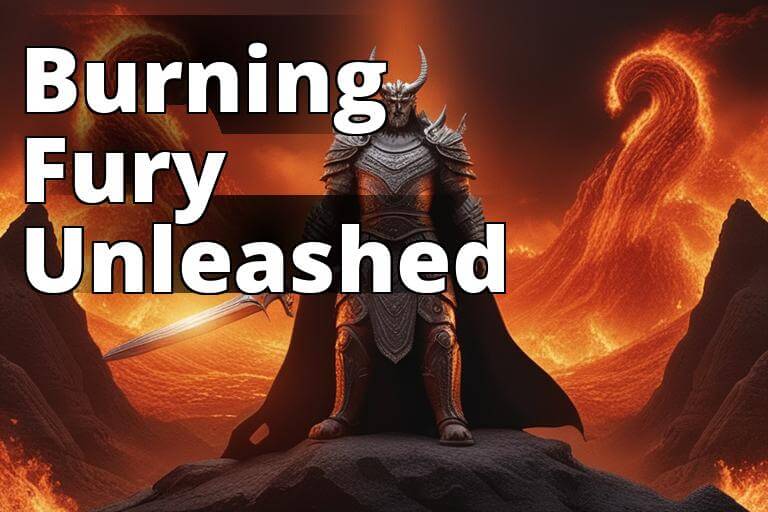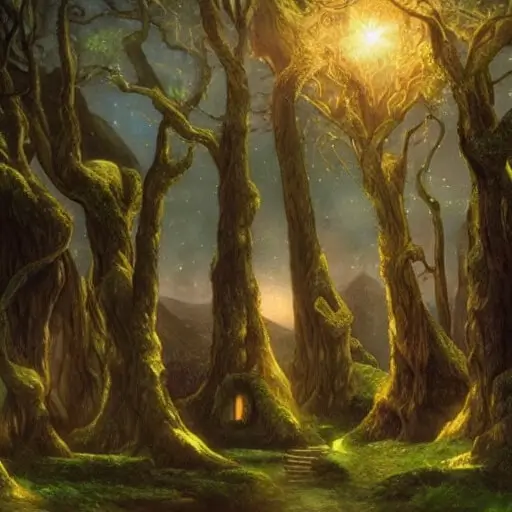Loki is a Norse mythological god and one of the most complex and fascinating characters in Norse mythology.
Loki is a trickster and shape shifter who has appeared in the form of a salmon, a mare, a fly, and possibly an elderly woman named ökk (Old Norse for “thank you”) he was often able to deceive others with his disguises.
Loki has been depicted as the god of mischief who could be both helpful and destructive. He is the son of Fárbauti (a jötunn) and Laufey (a goddess), and the brother of Helblindi and Bleistr, according to some sources.
Loki is married to Sigyn, with whom he has two sons, Narfi and Nari or Váli. Loki is the father of Hel, the wolf Fenrir, and the world serpent Jörmungandr, according to the jötunn Angrboa.
Loki was impregnated by the stallion Svadilfari as a mare and gave birth to the eight-legged horse Sleipnir.
Key Takeaways
- Loki is a complex trickster god in Norse mythology who is associated with chaos, deception, and mischief. He is the son of the giant Farbauti and the goddess Laufey.
- Loki is known for his ability to shape-shift and has taken on forms like a salmon, mare, fly, and old woman.
- He is portrayed as a sometimes helpful but often destructive force and is the father of several monsters including the wolf Fenrir and the world serpent Jörmungandr.
- Loki is married to the goddess Sigyn and has two benevolent sons with her, Narfi and Váli. He also has a daughter Hel, the goddess of the underworld.
- One of Loki’s most well-known misdeeds is convincing the blind god Hodur to kill his brother Baldr with mistletoe, leading to Baldr’s death.
- Loki was punished for his role in Baldr’s death by being chained to a rock with a snake dripping venom on his face. His wife Sigyn tries to ease his pain.
- Loki is prophesied to lead the forces of evil against the gods at Ragnarok, where he will be killed by Heimdallr.
Loki Symbol Meaning In Norse Mythology
Loki is one of the most popular and well-known Norse gods, and his symbol is often used to represent the Norse pantheon as a whole. Loki is known for his trickery and cunning, and he is often seen as a symbol of chaos and disorder.
However, Loki also has a more positive side, and he is sometimes seen as a protector of the weak and helpless.
In Norse mythology, Loki is often portrayed as a complex character, and his symbol reflect this dual nature.
He was often symbolized as a pair of snakes circling each other, forming the letter S, with the other biting the tail of the other.
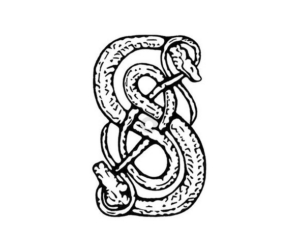
Loki The Trickster God
His figure was the personification of many different things, including, deception, treachery, betrayal, jealousy, mischief, chaos and even fire. It is possible that its association with fire is due to the fact that this element has in itself a double nature: it is capable of giving light and heat, as well as destroying everything that happens to it when, no longer under control, it turns into fire.
The fire that was kept burning all night long in the houses of Scandinavian people often caused violent fires inside the houses made entirely of wood, and this could be considered a sort of “betrayal” by the same element that at the beginning had been useful and pleasant.
Loki, being the god of deception, possessed this dual nature: initially benevolent and friendly, he could cruelly betray those who trusted him. He was therefore a very ambiguous figure, without any morality, and therefore on the borderline between good and evil.
It was said that he was the inventor of all the traps and the various tricks used by men to live and get food. His most famous invention was in fact the fishing net, a source of deception for fish but very useful for the survival of human beings.
All this reveals not only the wicked and ambiguous nature of Loki, but also his great intelligence and ability to prove useful to gods and mortals: in the writings of Nordic mythology (“Edda” poetic and prose, the latter written by Snorri Sturluson) there are several episodes on how the gods of Asgard are forced to resort to the services of Loki to succeed in many enterprises, or in which the same Loki, as repented of his wrongdoings, decides to remedy the wrong inflicted.
Loki In Modern Times
In modern times, Loki has often been compared to the figure of Satan, which is not correct since he is interested in preserving the cosmic order, while Satan is a fierce rival of that order.
Nevertheless, he always remained a trickster god, who loved to play pranks and anger other deities. It is not clear, however, if this character was due more to a simple desire to have fun or more to a real hatred of the cosmic order created by the Asi (the gods of the North).
As the god of chaos and disorder, it is more likely the latter hypothesis, although popular folklore wants Loki as a deity more benevolent than how it is presented in the literature, that is not completely evil, but playful character and, in its own way, generous to humanity.
As the god of fire, was often accompanied by Thor, the god of lightning, but as the god of cunning, was also accompanied to Odin, god of war and intelligence (it is said that with Odin had made a “blood pact”, a sign of the deep bond between intelligence and cunning).
According to some, Loki was even the son of Odin himself, since he had the same immense knowledge. However, most of the writings and Edda (Icelandic poems of the thirteenth century written in prose and poetry, which tell the story of the gods of the North) indicate Loki as the son of the giant Fàrbauti and the goddess Laufey (“island of leaves”) also called Nàl (“pine needles”).
It is not surprising that Loki could be the son of a giant rather than Odin, since the giants, in Nordic mythology, represented chaos, that is one of the aspects of Loki himself. For this reason, these creatures were often fought by the Aesir (especially Thor) in order to restore order and peace.
But it is also interesting that the mother of Loki is Laufey, who represented the leaves (from the English “leaf”) or pine needles: Fàrbauti was in fact one of the personifications of lightning, and it is therefore logical that the god of fire was generated by the union between lightning and leaves.
Born from the combustion of the leaves, it is thought that from the word “fire” this divinity took its name: in the ancient Nordic language fire was in fact called “logi”, then mispronounced in “loki”.
According to others, however, the name “Loki” could be the mispronunciation of the Nordic “Locke”, that is “spider”, to allude to the invention of the fishing net, which recalls precisely the web of this arachnid. Loki, in fact, had the ability to transform into all the beings he wanted, including animals.
He often turned into insects and spiders, but he also had the singular ability to turn into female beings, an aspect that underlined his great ambiguity and his lack of limits.
According to other versions, “Loki” could be the other name of “Ludor”, one of the three gods (along with Odin and Hoenir) indicated in the Edda as creators of mankind, and more precisely the bearer of fire and heat on Earth.
Loki was represented differently depending on the people and historical periods: for some he was dressed as a jester, emphasizing the burlesque and playful nature of the deity; for others he was a man with black hair and beard, with dark skin, as burned by fire; for others still, he had black skin and a pair of goat horns.
From this last representation, it is perhaps derived the figure of Krampus, a character of the Austrian folk folklore with the aspect of a goat, which is said to be the servant of Saint Nicholas (or Santa Claus). Or it could be derived that of Satan, the lord of the Christian hell with goat horns and wrapped in flames as Loki.
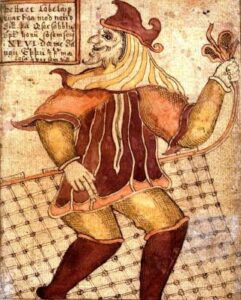
In modern times, Loki has often been compared to the figure of Satan, which is not correct since he is interested in preserving the cosmic order, while Satan is a fierce rival of that order.
Nevertheless, he always remained a mischievous god, who loved to play pranks and anger other deities. It is not clear, however, if this character was due more to a simple desire to have fun or more to a real hatred of the cosmic order created by the Asi (the gods of the North).
As the god of chaos and disorder, it is more likely the latter hypothesis, although popular folklore wants Loki as a deity more benevolent than how it is presented in the literature, that is not completely evil, but playful character and, in its own way, generous to humanity.
As the god of fire, was often accompanied by Thor, the god of lightning, but as the god of cunning, was also accompanied by Odin, god of war and intelligence (it is said that he had made a “blood pact”, a sign of the deep bond between intelligence and cunning).
Loki Children
Sleipnir is none other than one of Loki’s many children, given birth to by himself after eating the heart of the giantess Angrboða. The other children of the God are the serpent Miðgarðsormr, the Goddess of death Hel, the wolf Fenrir and two other benevolent creatures named Vali and Narfi.
According to some, Loki possessed instead an indistinct aspect between man and woman, and in fact it was said that he had the ability to generate his children both as a man and as a woman, emphasizing even more the chaos that always accompanied his figure.
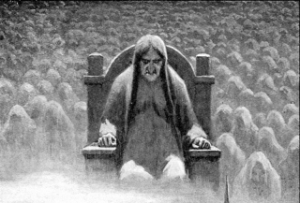
Hel Loki’s daughter
One of the most famous daughters of Loki, had by the giantess Angrboda but given birth by Loki himself, was Hel, the goddess of death or the underworld, guardian of the hell hole in which Odin had thrown her because her presence did not harm the gods (again there is an analogy with Satan, who was thrown into the hell hole by St. Michael the archangel).
The birth of Hel was said to have given rise to all the diseases that afflict mankind, but those who had served Odin in life with wisdom and military skill, however, was spared the condemnation to the spectral realm of the goddess of the underworld once fallen in battle, they would be led by the Valkyries (warrior goddesses in the service of Odin) in Valhalla, the paradise of the Norse gods, while the wicked would be thrown into the hellhole to be subjected to eternal punishment.

Angrboda and her cursed lineage
Brothers of Hel were the monsters Fenrir (or Fenris) and Midgardsormr (or Jormungand), respectively, the ravenous wolf who would kill Odin at the end of the world, and the snake that on the same occasion would kill Thor. Loki had also given rise to many giants, symbol of chaos, as well as benevolent creatures, such as Sleipnir, Odin’s horse.
The Nordic mythology tells us that he was born directly from Loki and that he had the beauty of eight legs, a fact in favor of the fact that the name of the god may derive from the word “spider”.
Sleipnir’s father was instead the steed Svadilfari, “the slave” or “the unfortunate”, perhaps because the popular imagination had enjoyed imagining that a horse with eight legs could be born from the union between a horse and a spider.
Some benevolent gods were generated by Loki and his wife Sigyn, goddess of which we know very little except that she was always faithful to her husband, however evil he was. For this reason she was considered the symbol of marital fidelity.
Of Loki are told many misdeeds, such as cutting the hair of Sif, the wife of the god Thor, who had to provide new hair made of gold not to be slaughtered by the latter.
On that occasion, Loki had to go down into the mines of the dwarfs, the sons of Ivaldi, where he had procured both the new hair for Sif and a magical sailing ship (Skìdhbladhnir) for the god Freyr and the spear Gungnir for Odin.
But, ever true to his mischievous nature, he had then bet his head with two dwarves Eitri and Brokkr that they would not be able to create three objects more beautiful than those.
The two brothers had immediately set to work to forge the hammer Mjöllnir for Thor, the ring Draupnir for Odin, and the golden boar Gullinbursti for Freyr.
In the end the dwarfs had won the bet with Loki, but since during the making of Mjöllnir they had been disturbed by the mischievous deity turned into a fly, the object had succeeded with a handle perhaps too short.
Despite having lost the bet, it was decided not to cut off Loki’s head, but as a punishment his mouth was sewn shut anyway.
Of him is also narrated the theft of the gold necklace of the goddess Freya (Brìsingamen), that he had to give back after a fight underwater with Heimdallr, Sif’s brother, fought by the two under the guise of two seals; or the complicity in the kidnapping of the goddess Idunn by the giant Thiazi, that Loki was then forced to go to save transformed into a hawk because threatened with horrible punishments by the other gods.
But the most famous and important legend about the misdeeds of Loki has as protagonists Hodur (in Norse Höðr) and Baldr, the two sons of Odin and Frigg, respectively king and queen of the gods.
It was in fact Loki to convince Hodur, god of war and blind from birth, to throw against his brother, god of light, a mistletoe dart to kill him.
It is said that Frigg, worried about Baldr’s dreams foretelling death, had made all the creatures of the universe swear never to harm her son, but had forgotten to swear a mistletoe seedling, considered harmless or insignificant.
Knowing this, Loki had convinced with deception Hodur to throw with his bow the same seedling on Baldr, causing his death, and then, in the guise of the giantess Thokk, had prevented the god to return to life refusing to cry for him, a condition that Hel had imposed to the entire universe so that Baldr could be welcomed back among the Asi.
As a punishment, Hodur was killed by his half-brother Vàli, while Loki was chained to a mountain made of sharp stones so that his face would be corroded by the venom of a snake.
In this episode is narrated yet another act of fidelity on the part of the goddess Sigyn who, by holding up a basin, prevented the drops of poison from touching her husband’s skin.
However, nothing could save Loki from torture at the moment when Sigyn was forced to move away to empty the basin. According to popular tradition, the god’s agonizing screams and spasms were responsible for the earthquakes.
It is thought, however, that the legend of the torture of Loki has been largely influenced by the myth of Prometheus (Source: Timothy J. Stephany, The Theft of Fire: Prometheus and Loki), a figure of the classical world also linked to fire, and therefore may have been added later to the writings of Germanic and Scandinavian mythology.
In fact, it is the only episode in which Loki is guilty of a fault that he cannot find a way to atone for, contrary to the tradition of Nordic mythology and to the malicious but sometimes useful character of the god.
Loki was, therefore, a very particular figure of the Nordic mythology: ambiguous, considered the personification of evil, who loved to sow discord among the gods; but at the same time, he was also seen as an inevitable presence, a necessary figure for the maintenance of the balance of the cosmos.
To him were also attributed special intellectual gifts and the possession of magic shoes with which he could fly or walk on water.
It was also said that during the Ragnarok – the end of the world or Twilight of the gods – when the forces of evil would have prevailed over the forces of good, it would have been Loki, father of monsters, giants and witches, to lead the victory of evil.
Eventually, however, he would be killed by Heimdallr, the “white god” brother of Sif, in a confrontation that would lead to the death of both.
FAQs about Loki
Who are Loki’s parents?
Loki’s father is the giant Farbauti and his mother is the goddess Laufey.
What powers does Loki have?
Loki is a shapeshifter and can take on the form of animals, insects, or even other genders. He is associated with fire and has magic abilities.
Why does Loki cause so much trouble?
Loki is considered a trickster god who creates chaos and discord, often for his own amusement. His nature is to be deceptive and cunning.
What is Loki’s role in Baldr’s death?
Loki tricks the blind god Hodur into killing Baldr, Odin’s son, with a dart made of mistletoe, the only thing that could harm him.
Who is Loki’s wife?
Loki’s wife is the goddess Sigyn. She is known for staying loyal to Loki despite his misdeeds.
Who are Loki’s monster children?
Loki is the father of several monsters including Fenrir the wolf, Jörmungandr the world serpent, and Hel the goddess of the underworld.
How is Loki punished after Baldr’s death?
Loki is chained to a rock and has a snake drip venom on his face as punishment for causing Baldr’s death. His wife Sigyn tries to ease his pain.
Does Loki die at Ragnarok?
Yes, it is prophesied that Loki will be killed at Ragnarok, the end of the world in Norse mythology, by the god Heimdallr.
Is Loki evil or good?
Loki has a complex, dual nature – he is a trickster and harbinger of chaos but sometimes helps the gods and humans in mischievous ways. He is not fully evil nor good.
Why is Loki an important figure in Norse mythology?
As a trickster deity, Loki added an element of unpredictability to Norse myths and served as a catalyst for many important stories and events. He is one of the most recognizable Norse gods.
Shop Viking Jewelry
Are passionate about Vikings or Norse mythology? Finding the ideal piece of Norse Jewelry can be challenging, especially if you lack inspiration or don’t know where to look. Surflegacy, on the other hand, has you covered. We have a wide range of Viking Jewelry in various styles, shapes, colors, and materials, to accentuate your Viking spirit and look.

